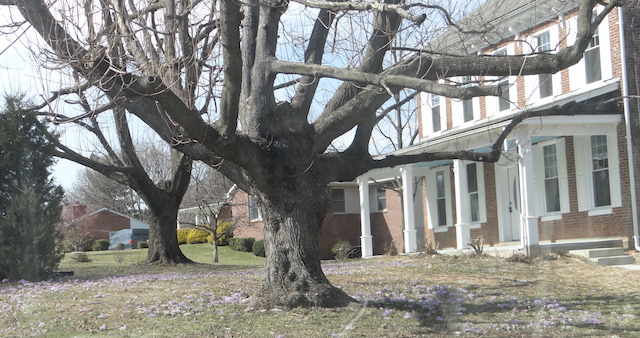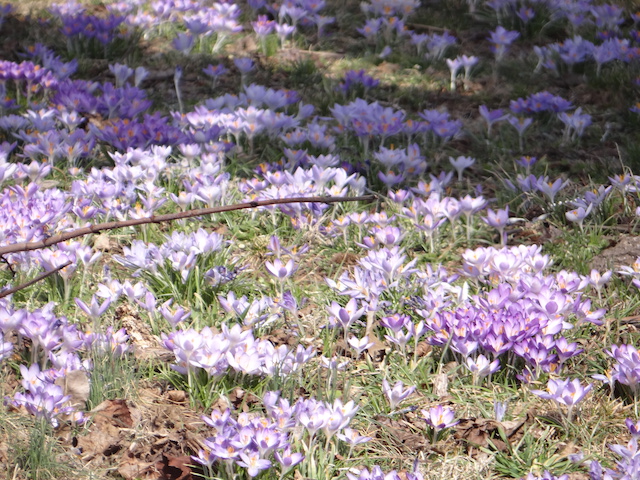Last week at our monthly meeting, Julia exclaimed that she had seen a wonderful display of purple crocuses in the front yard of a house on Hook Road. Then, Audrey mentioned that her neighbor also had a yard of crocuses which said neighbor was diligently spraying with Roundup to eradicate, believing the bulbs to be harmful to her shrubbery. (Most of us are trying hard to have a “yard of dreams” planted with these beauties!)
After first driving the wrong direction on Hook Rd.toward Gist, I turned around and crossed over Rt. 97 and drove a bit until I came to a vacant house on the left with two large trees in the front yard underplanted with crocus that had spread outward. These could be either of two early species: snow crocus–Crocus vernus or Crocus tommasinianus. I have learned to plant only “Tommies” because the voles and chipmunks leave them alone whereas they are only too happy to chew bits off the the other types, including the large Dutch crocus.
Once planted (groups or drifts recommended), they’ll come up yearly and as long as you let their grass-like foliage die down naturally (don’t repeatedly drive over any that might be in your yard), they’ll gladly multiply. They will naturalize by offsets to the parent corm or by seed. If you watch, you’ll see honeybees are attracted to the pollen in crocus as an early spring food source. Oh, I could find *NO* indication that spring crocus are harmful in any way to other plants!
This warm spell is likely to hasten flower drop, so you’ll have to be quick to see these in person.




